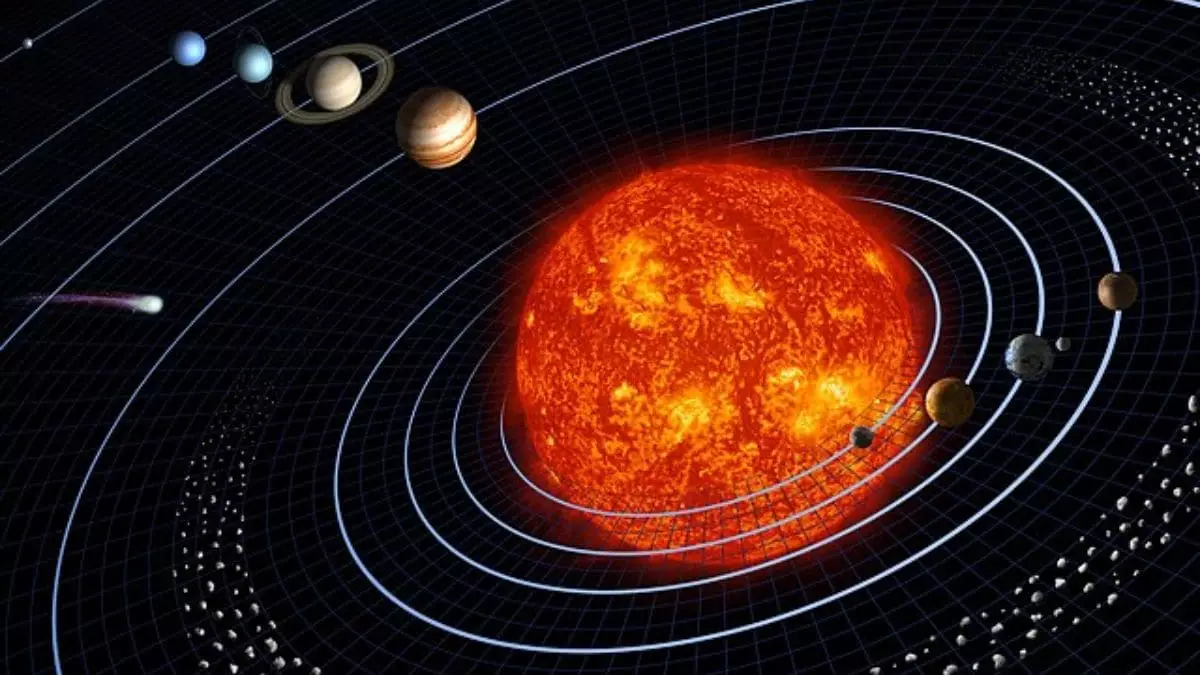For decades, the consensus among planetary scientists has been that the solar system’s inner planets—Earth, Mars, and their rocky siblings—secured their identities first, forming relatively early and swiftly. Outer planets, cloaked in ice and gas, supposedly lagged behind, their formation delayed by the presence of water and volatile materials. This traditional view shaped our understanding of planetary evolution, emphasizing a linear, sequential process that distinguished the inner from the outer. However, recent research, driven by the startling discovery of a tiny meteorite from beyond Jupiter’s orbit, demands a radical rethink of this narrative. It suggests that the formation of planets across the entire solar system may have been a more synchronized, nearly simultaneous event than previously believed. This revelation shakes the very foundation of our comprehension and urges us to reconsider the timeline of planetary genesis with an unflinching critical eye.
The Significance of the Northwest Africa 12264 Meteorite
The so-called Northwest Africa 12264 meteorite, weighing a mere 50 grams, has inadvertently become a scientific treasure trove. Its isotopic signatures—particularly its chromium, oxygen, and lead isotope ratios—serve as cosmic timestamps, revealing its origin and age with remarkable precision. The key piece of evidence is its age: approximately 4.564 billion years, a figure that aligns astonishingly well with early crust samples from interior planets like Earth and Mars. What makes this discovery so provocative is not just its age, but where it came from: the outer reaches of the solar system, beyond the asteroid belt, apparently formed at a similar time as inner planet crusts. This dismantles the long-held assumption that water-rich, outer solar system bodies lagged behind in their formation. Instead, it suggests a more rapid, widespread process of planetary building, occurring over a shorter, more unified timescale.
Implications for Planetary Science and Cosmology
The implications extend far beyond our own backyard. If planetary formation was indeed a more contemporaneous event, then the processes shaping planetary systems across the galaxy might be fundamentally different from what current models propose. Observations of exoplanetary systems and circumstellar disks around young stars already hint at rapid planetesimal formation at large orbital distances. Now, with the meteorite’s insights, we are compelled to consider that the entire process may be governed by universal principles, operating efficiently and quickly across vast distances. This perspective challenges the very notion that water and volatile materials inherently slow planet formation, positioning these features instead as part of a broader, more complex scenario where multiple planets coalesced within a tight window of cosmic history. For those of us who believe in a fair and balanced universe—where complexity and diversity arise from fundamental, universal laws—such evidence is compelling enough to warrant major revisions in our understanding. It invites a more nuanced, less linear view of planetary evolution, emphasizing swift, large-scale planetary assembly rather than delayed, isolated events.
The Human Drive to Relearn Our Cosmic Origins
As proponents of progress within a centered, liberal scientific framework, we ought to celebrate this scientific upheaval—not as a setback, but as an exciting opportunity to refine our theories and expand our horizons. This discovery underscores the importance of remaining skeptical of complacent assumptions and highlights the value of innovative research that challenges the status quo. The quest to understand how planets form is not merely academic—it’s a fundamental part of understanding our place in the universe. When new evidence upends old models, it compels us to confront our biases and push the boundaries of knowledge. This meteorite, tiny yet profound, serves as a reminder that the universe’s complexity often defies human expectations. Instead of viewing the cosmos as a static, predictable machine, we should embrace its potential for surprises, recognizing that our understanding is always temporary—and that the pursuit of truth requires an open, critical mind.

